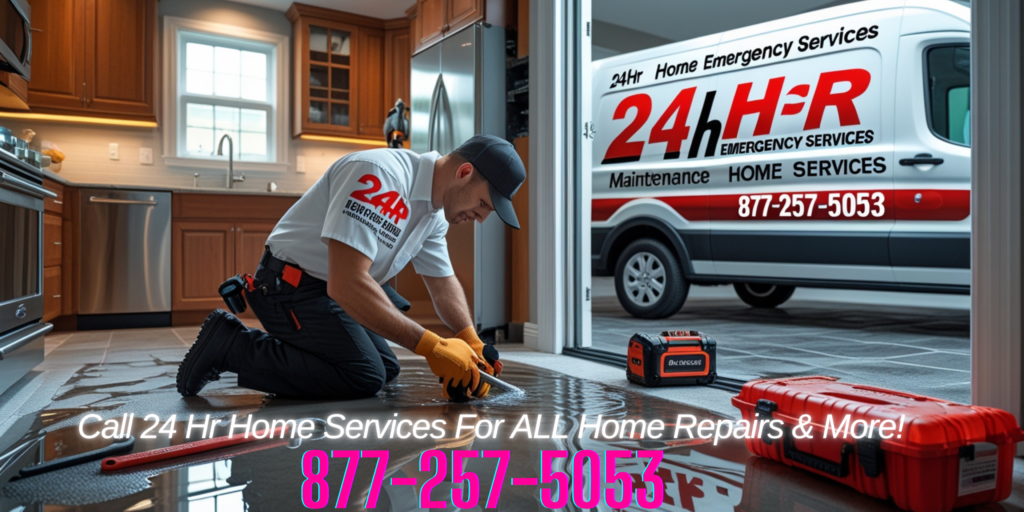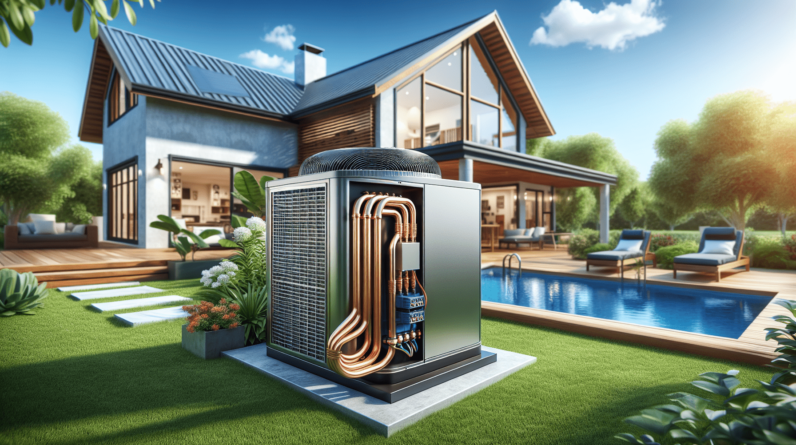
So, you’ve just discovered a broken pipe in your home and you’re wondering if there’s any hope for it to be fixed. Well, you’ll be glad to know that the answer is yes! A broken pipe can absolutely be repaired, saving you from the headache and expense of replacing the entire system. In this article, we’ll explore the various methods and techniques used to mend a broken pipe, helping you understand the options available and make an informed decision. Whether it’s a minor leak or a major rupture, hold tight as we unravel the mystery of pipe repairs and show you that a solution is just around the corner.
Assessing the Damage
When faced with a broken pipe, it is essential to assess the damage before proceeding with any repairs. By identifying the cause and determining the extent of the damage, you can better understand the necessary steps to fix the problem effectively.
Identifying the Cause
Before you can begin repairing a broken pipe, it is crucial to identify the root cause of the issue. Common causes of pipe damage include corrosion, freezing temperatures, high water pressure, shifting soil, and aging pipes. By understanding the cause, you can address any underlying issues to prevent future damage.
Determining the Extent of the Damage
Once you have identified the cause, it is important to determine the extent of the damage. Assessing the severity of the break will help you decide on the appropriate repair method. Minor leaks, pinhole leaks, cracked pipes, burst pipes, frozen pipes, and threaded pipe joint issues all require different approaches to fix the problem effectively.
Temporary Fixes
In some cases, a broken pipe may require immediate attention, and temporary fixes can be employed to stop the leakage temporarily. These temporary fixes can provide a short-term solution while you arrange for more permanent repairs.
Using Pipe Clamps
One temporary fix for a broken pipe is the use of pipe clamps. These clamps are designed to provide a tight seal around the damaged area, restricting further water leakage until a more permanent repair can be carried out. They come in various sizes and can be easily installed by securing them tightly around the affected pipe.
Applying Epoxy Putty
Epoxy putty is another option for temporarily fixing a broken pipe. This putty combines two components that, when mixed together, create a durable, adhesive substance that can be applied to the damaged area. Once the epoxy putty has cured, it forms a waterproof seal, preventing any water from escaping the pipe until professional repairs can be made.
Wrapping with Rubber Tape
Rubber tape is another temporary fix that can effectively stop minor leaks. This self-fusing tape is made of silicone rubber and can stretch and adhere to itself when wrapped tightly around a damaged pipe. Its insulating properties help to contain the water and prevent any further leakage. While rubber tape can provide a temporary solution, it is important to remember that it may not be suitable for long-term use and should be replaced with permanent repairs as soon as possible.
Repairing Minor Leaks
Minor leaks in pipes can cause significant water damage if left unaddressed. Repairing these leaks promptly is crucial to prevent further deterioration of the pipe and to avoid potential mold growth or structural issues.
Replacing a Section of Pipe
In some cases, the best approach to fixing a minor leak is to replace the section of pipe that is damaged. This method involves cutting out the affected area and replacing it with a new section of pipe. It is important to ensure that the replacement pipe is the correct size and material to maintain the integrity of the plumbing system.
Using Compression Fittings
Compression fittings are a popular choice for repairing minor leaks as they provide a secure and watertight connection. These fittings consist of a nut and a ring that, when tightened onto the damaged pipe, create a compression seal. Compression fittings are relatively easy to install and can be a reliable long-term solution for minor leaks.
Applying Pipe Sealants
Pipe sealants, such as thread seal tape or pipe joint compound, can be applied to the threads of pipe fittings to prevent leaks. Thread seal tape is wrapped around the male threads of the pipe, while pipe joint compound is applied directly to the threads. These sealants fill in any gaps or imperfections, creating a watertight seal when pipe fittings are tightened. Using pipe sealants is a common and effective method for repairing minor leaks in threaded pipe joints.
Fixing Pinhole Leaks
Pinhole leaks are small, pinpoint-sized holes that can develop in pipes due to corrosion or other factors. While they may seem minor, these leaks can still cause significant water damage if left untreated. Luckily, there are several methods to fix pinhole leaks and prevent further water loss.
Using a Slip Coupling
A slip coupling is an effective solution for fixing pinhole leaks. This type of coupling consists of two sections that can slide over each other. By cutting out the damaged section of the pipe and inserting the slip coupling, you can create a secure and leak-free connection. Slip couplings are particularly useful when the damaged area is difficult to access or in tight spaces.
Using a Copper Pipe Patch
If you have a pinhole leak in a copper pipe, a copper pipe patch can be an efficient solution. These patches are made of copper and have adhesive backing, allowing them to stick to the damaged area. Once applied, the patch creates a tight seal, preventing any further leakage. Copper pipe patches are easy to use and can provide a quick and effective fix for pinhole leaks.
Applying Rubber or Silicone Tape
For a temporary fix on pinhole leaks, rubber or silicone tape can be applied. Similar to the rubber tape used for temporary fixes, this tape can be wrapped tightly around the damaged area, creating a temporary seal. Although not a permanent solution, it can buy you time until a more permanent repair can be made.
Repairing Cracked Pipes
Cracked pipes pose a significant risk of water damage and should be repaired promptly to prevent further deterioration. Various methods can be employed to repair cracked pipes, depending on the severity of the crack and the type of pipe material.
Using Fiberglass Resin
Fiberglass resin is a popular choice for repairing cracked pipes. This method involves applying layers of fiberglass cloth or matting to the damaged area and saturating it with resin. As the resin cures, it forms a strong and solid repair that reinforces the cracked pipe. Fiberglass resin repairs are effective for moderate to large cracks and can provide a long-lasting solution.
Applying a Pipe Wrap
Pipe wraps, also known as repair wraps, are quick and straightforward solutions for fixing cracked pipes. These wraps consist of a fiberglass tape or a self-adhesive tape that can be wrapped tightly around the damaged area, sealing the crack. The wrap hardens when exposed to air, creating a durable and waterproof repair. Pipe wraps are best suited for small to medium-sized cracks and can be easily applied by following the manufacturer’s instructions.

Soldering the Crack
For copper or metal pipes, soldering can be an effective method for repairing cracks. This technique involves heating the damaged area with a torch and applying solder to fill the crack, creating a watertight seal. Soldering should only be attempted by those with experience, as it requires proper tools and techniques to ensure a successful repair.
Mending Burst Pipes
Burst pipes are a plumbing emergency that requires immediate attention to minimize water damage to your property. Depending on the severity of the burst, you may need to shut off the water supply before proceeding with repairs.
Replacing the Damaged Section
For burst pipes, it is often necessary to replace the damaged section entirely. This involves cutting out the burst section and installing a new pipe segment. It is crucial to select the correct pipe material and size to ensure a proper fit and maintain the integrity of the plumbing system.
Using Compression Couplings
Compression couplings can also be used to repair burst pipes. These couplings create a tight seal by compressing on the pipe ends, providing a secure and watertight connection. Compression couplings are relatively easy to install and can be an effective solution for burst pipes.
Soldering a Fitting
Depending on the type of pipe material, soldering a fitting can be an effective repair method for burst pipes. This technique involves heating the pipe end and the fitting with a torch and applying solder to create a strong and watertight connection. Soldering requires skill and experience, so it is best left to professionals or those with adequate knowledge and tools.
Repairing Frozen Pipes
Frozen pipes can cause significant damage due to the expansion of water as it freezes. When dealing with frozen pipes, it is essential to act quickly to thaw the pipe and assess for any damage.
Thawing the Frozen Pipe
The first step in repairing a frozen pipe is to thaw it completely. This can be done using a hairdryer, heat lamp, or hot towels wrapped around the frozen section. It is crucial to avoid using open flames, as they can damage the pipe or pose a fire hazard. Thawing the pipe will allow water to flow again and help determine if any repairs are needed.
Inspecting for Damage
After thawing the frozen pipe, it is important to inspect it for any signs of damage. Look for cracks, leaks, or weakened areas that may require repair. If any damage is found, it is best to follow the appropriate repair method for the specific issue.
Applying Appropriate Repair Methods
Once the frozen pipe has been thawed and inspected for damage, you can apply the appropriate repair methods based on the specific issue. Previous sections of this article provide guidance on repairing minor leaks, fixing pinhole leaks, repairing cracked pipes, and mending burst pipes.
Dealing with Threaded Pipe Joints
Threaded pipe joints are a common source of leaks, especially if they were improperly sealed or have deteriorated over time. Several methods can be employed to repair and seal threaded pipe joints effectively.
Using Pipe Dope or Thread Seal Tape
Pipe dope, also known as pipe thread compound, is a paste-like substance that can be applied to threaded pipe joints to create a leak-free seal. It fills any gaps or imperfections, preventing water from leaking through the threads. Another option is using thread seal tape, also known as plumber’s tape. This thin, PTFE tape is wrapped tightly around the male threads before connecting the pipe fittings, creating a secure and watertight seal.
Employing Pipe Joint Compound
Pipe joint compound, also referred to as pipe joint sealant, is a thicker and stickier variation of pipe dope. It is applied to the threads of pipe joints, providing a secure and long-lasting seal. Pipe joint compound is particularly useful for sealing larger pipe joints or those subject to high water pressure.
Applying Threaded Pipe Repair Kits
Threaded pipe repair kits are available commercially and provide a comprehensive solution for repairing leaking threaded pipe joints. These kits typically include all the necessary components, such as repair sleeves, gaskets, and sealants, to fix the leak. Following the manufacturer’s instructions, you can easily repair the threaded pipe joint without the need for extensive plumbing knowledge or tools.
Replacing Irreparable Pipes
In some cases, pipes may be beyond repair and require complete replacement. Identifying such pipes and efficiently replacing them is crucial to maintain the integrity of the plumbing system.
Identifying Pipes Beyond Repair
Pipes may become irreparable due to extensive damage, deteriorated material, or multiple leaks. If the damage is widespread or the pipe material has significantly degraded, it may be more cost-effective and practical to replace the entire pipe rather than attempting repairs that may not be long-lasting.
Selecting Replacement Materials
When replacing irreparable pipes, it is important to consider the appropriate material for the specific application. Common pipe materials include copper, PVC (polyvinyl chloride), PEX (cross-linked polyethylene), and galvanized steel. Each material has its advantages and limitations depending on factors such as cost, durability, and compatibility with the plumbing system.
Removing and Reinstalling New Pipes
Replacing irreparable pipes involves removing the damaged sections and installing new ones. This process may require cutting and joining the new pipes, ensuring proper sizing and connections. Proper installation techniques, such as soldering, gluing, or crimping, should be followed to guarantee a secure and leak-free replacement.
Preventing Future Pipe Damage
While addressing pipe damage is important, taking proactive measures to prevent pipe damage in the first place is equally crucial. Implementing effective prevention strategies can reduce the likelihood of future plumbing issues and minimize the need for repairs.
Insulating Pipes
One effective method to prevent pipe damage is by insulating pipes, particularly in areas exposed to extreme temperatures. Insulation sleeves or foam insulation can help protect pipes from freezing during cold weather, reducing the risk of cracks or bursts. Insulating hot water pipes can also improve energy efficiency by reducing heat loss.
Maintaining Proper Water Pressure
High water pressure can put excessive strain on pipes, leading to leaks or bursts. It is essential to maintain proper water pressure by using a pressure regulator or installing a pressure-reducing valve. Regularly check the water pressure and adjust it to the recommended level to prevent unnecessary stress on the pipes.
Regularly Inspecting for Leaks or Wear
Regular inspections for leaks or signs of wear can help detect potential issues early on before they escalate into larger problems. Look for any signs of water damage, dampness, or discoloration around pipes, joints, or fixtures. Additionally, check for any unusual noises, such as hissing or dripping sounds, which could indicate a hidden leak. Promptly addressing any identified issues can prevent further damage and costly repairs down the line.
By following these comprehensive steps, you can effectively assess, repair, and prevent pipe damage, ensuring the longevity and functionality of your plumbing system. Remember to prioritize safety and, when in doubt, consult a professional plumber for assistance with complex repairs or installations.






